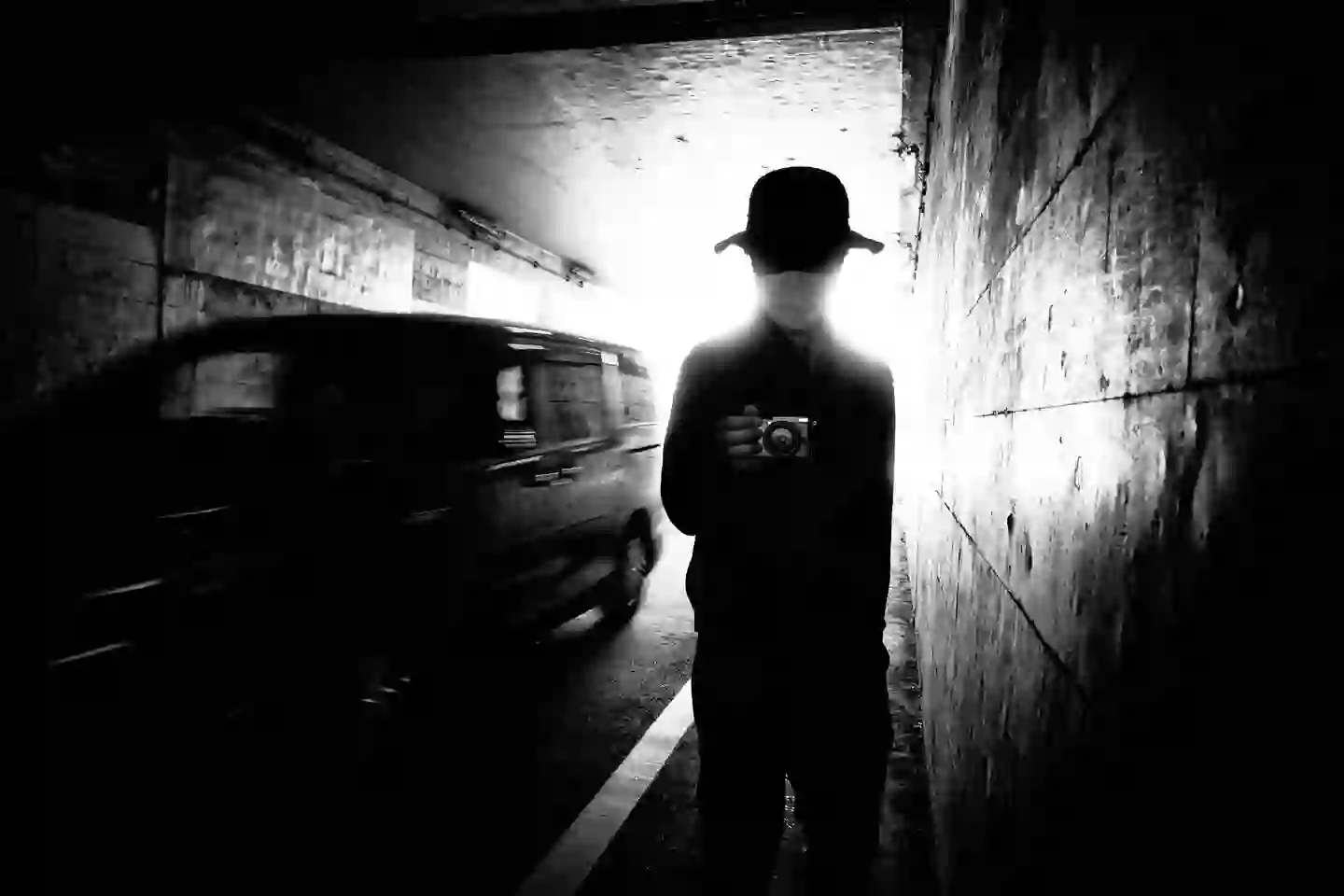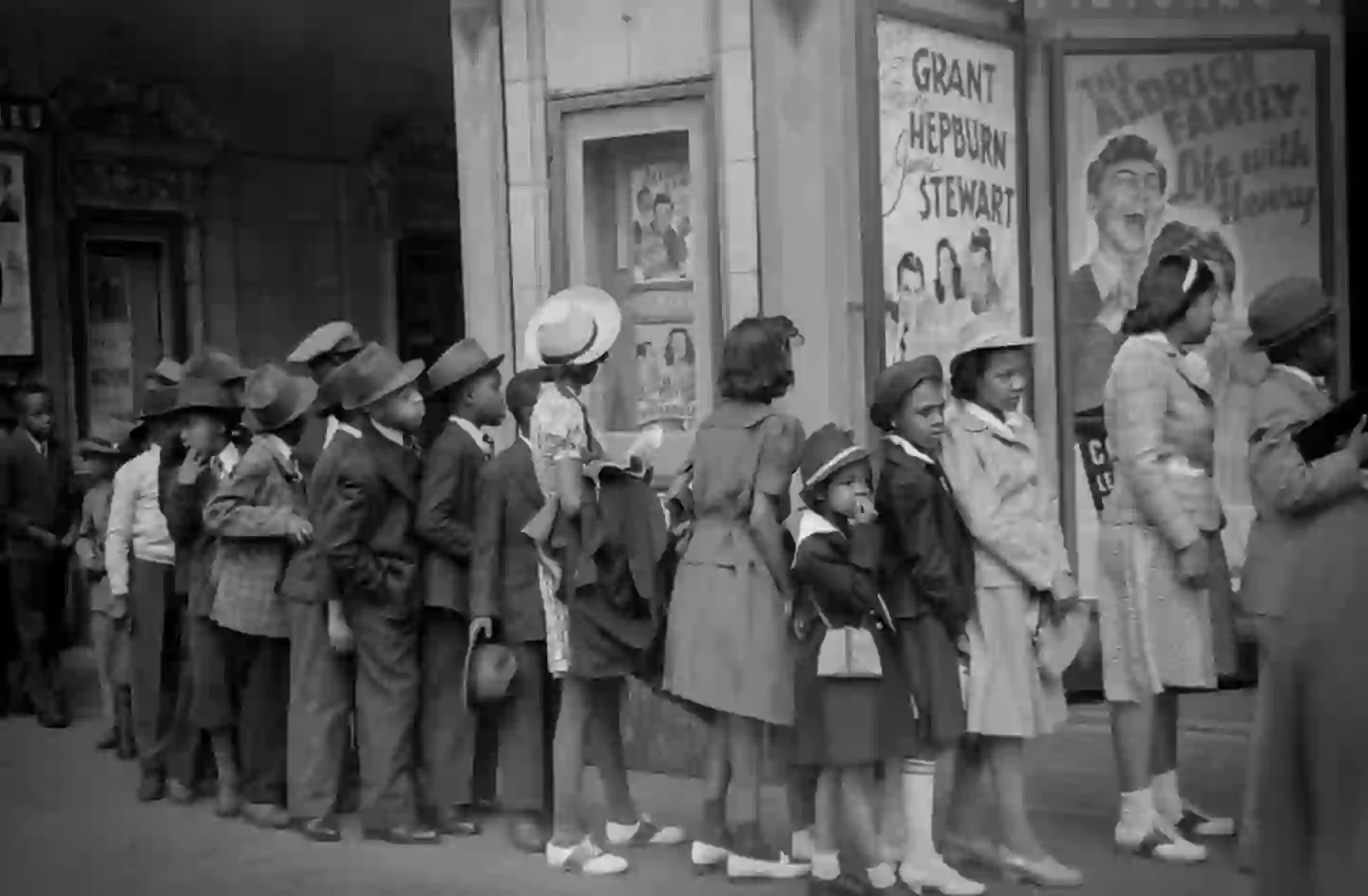Time Travel or Technological Misinterpretation? An Analysis of the 1941 Photograph Controversy
In a recent surge of online debate, a photograph taken in 1941 has become the focal point of heated discussions and wild speculation on social media. The image, captured by photographer Edwin Rosskam, depicts a group of well-dressed children queuing outside a cinema in Chicago during a turbulent period in world history. However, one detail has drawn particular attention: a young boy on the far right appears to be holding an object that many are comparing to an iPad. Given that Apple introduced the first iPad in 2010, this anomaly has led some Reddit users and internet enthusiasts to suggest, perhaps facetiously, that the photograph serves as evidence of time travel.

In this article, we delve into the details surrounding the photograph, examining both the historical context of its capture and the modern technological comparisons that have fueled speculation. We also explore the broader themes of scientific progress and the public’s perennial fascination with bending the boundaries of time and technology.
Historical Context: Chicago in 1941
The photograph in question originates from a time marked by global upheaval. Taken in 1941, it offers a snapshot of life during the early years of World War II. During this era, communities across the United States were experiencing rapid social and economic changes. In cities like Chicago, public gatherings at movie theaters were common, offering both entertainment and a brief respite from the anxieties of the era. The image not only captures the fashion and social etiquette of the time—with children dressed in their Sunday best—but also serves as a visual reminder of a society striving for normalcy in the midst of global conflict.

Photographer Edwin Rosskam managed to encapsulate a moment that, while ordinary on the surface, has now gained extraordinary attention due to the perceived anachronism of one particular detail. The image, archived over eight decades ago, is being revisited with modern eyes that are quick to draw parallels with contemporary technology.
The Controversial Detail: A Modern Device in a Vintage Setting
At the center of the controversy is the appearance of what seems to be a modern tablet-like device in the hand of one of the children. On closer inspection, several observers have noted that the object bears a resemblance to an iPad. This observation has sparked a flurry of comments and theories on platforms like Reddit, where users have speculated that the boy might be in possession of a device that could only have originated from a future era. Considering that the first iPad was not released until 2010—a staggering 69 years after the photo was taken—the suggestion of time travel, while highly unlikely, has captured the collective imagination.
It is important to note, however, that alternative explanations have been put forward by more pragmatic voices in the discussion. Some users suggest that the object could simply be an early form of a portable item such as a notepad, a device used for promotional purposes, or even an artifact of early film technology. These interpretations are bolstered by historical accounts of the film and cinema industries, where patrons were sometimes provided with or encouraged to use early versions of writing or communication tools during screenings.
Public Reaction: A Debate Fueled by Imagination and Skepticism
The online community’s response to the photograph has been as diverse as it is vigorous. On Reddit, where the image first garnered widespread attention, users have expressed a mix of incredulity and humor. Some posts emphasize the improbability of time travel by citing the stark chronological discrepancy between the photo’s timestamp and the advent of modern tablet technology. For instance, one commenter noted the obvious anachronism by stating, “iPad carrying movie goes, all the way to the right,” while others offered more measured explanations regarding the item’s true identity.
Despite the lighthearted banter, the debate also touches on deeper issues. Many commentators use the image as a jumping-off point to discuss the nature of historical documentation and the evolving interpretation of technology. In an era when digital imagery and viral content can blur the lines between reality and fiction, the photograph becomes more than just a historical artifact—it transforms into a symbol of how modern perspectives can reinterpret the past.
Several users have drawn parallels between this incident and other instances where contemporary technology seems to ‘invade’ historical settings. These comparisons often highlight the broader phenomenon of anachronistic errors in old photographs, where lighting, shadows, and even object reflections sometimes give the illusion of modern artifacts. Such discussions underscore the importance of context and careful analysis when examining historical images.
Scientific and Technological Perspectives
From a scientific standpoint, the notion of time travel remains firmly in the realm of theoretical physics and speculative fiction. While modern physics has explored the concept through ideas like wormholes and the manipulation of spacetime, there is currently no experimental evidence to support the possibility that time travel, in the sense of transporting objects or individuals across different eras, is achievable.
Prominent physicists have repeatedly emphasized that while certain theories allow for the mathematical possibility of time loops or similar phenomena, the practical realization of these concepts is fraught with challenges. The discussion in the comment sections of platforms like Reddit often mirrors this divide between scientific rigor and imaginative speculation. One user remarked on the improbability of the device being an actual time travel artifact, suggesting instead that it might simply be an early model of a portable communication tool or an object used in promotional campaigns during film screenings.
Modern scientific achievements, however, continue to blur the line between what was once considered impossible and what is now within the realm of potential. For instance, recent breakthroughs in quantum computing and particle teleportation have pushed the boundaries of our understanding of physics. In one remarkable experiment, researchers from Oxford University successfully teleported particles of light between two quantum computers, an achievement that, while not time travel, underscores the rapid pace of technological advancement.
Another related field of interest is the development of fusion energy, often described as the creation of an artificial sun. Scientists working on fusion reactors are exploring ways to harness nearly limitless clean energy—a goal that has the potential to revolutionize modern society. These advancements, while unrelated to the photograph directly, contribute to an environment where past and future increasingly appear intertwined, at least in the public imagination.
A Broader Cultural Reflection: Time Travel in the Collective Imagination
The intense interest in the 1941 photograph is part of a broader cultural phenomenon in which time travel and futuristic technology captivate the public consciousness. For decades, literature, film, and art have explored the possibilities of bending time and space, inviting audiences to imagine worlds where the past, present, and future coexist in unexpected ways.
Science fiction has long served as a mirror for our technological ambitions and anxieties. Stories of time travel, futuristic devices, and parallel universes allow us to explore the boundaries of human experience and the limits of our technological achievements. The image of a child from the 1940s potentially holding a futuristic device taps directly into this vein of thought, igniting debates that are as much about our hopes and fears for the future as they are about historical anomalies.
In a way, the photograph is emblematic of the ways in which modern society grapples with the rapid pace of technological change. As we continue to see science fiction themes materialize in our everyday lives—be it through the advent of artificial intelligence, advancements in renewable energy, or even the rise of portable devices—the line between imaginative possibility and technological reality becomes increasingly blurred.
Conclusion: The Intersection of History, Technology, and Imagination
While the photograph taken in 1941 has undoubtedly sparked a vibrant discussion online, it is essential to approach the matter with both a critical eye and an appreciation for historical context. The object in the child’s hand, although resembling a modern tablet, is far more likely a misinterpreted artifact of its time rather than definitive proof of time travel. The contrast between the era’s available technology and modern devices offers a compelling case study in how historical images can be reinterpreted through the lens of contemporary innovation.
The broader conversation surrounding the image reflects a society that is increasingly fascinated by the convergence of past and future. It serves as a reminder that while scientific progress continues to achieve what was once deemed impossible, such breakthroughs are grounded in rigorous research and experimentation. Time travel, as alluring as it may be in popular culture, remains within the theoretical confines of physics rather than an operational reality.
Ultimately, the 1941 photograph is a testament to the enduring human capacity for wonder and imagination. It encourages us to revisit the past not only as a static record of bygone eras but as a living canvas onto which we project our dreams, aspirations, and the ever-present hope that tomorrow might hold secrets beyond our current understanding.
As discussions continue online and new interpretations arise, the photograph will likely remain a symbol of the intersection between history and modern technology—a reminder that the past, however well-documented, is open to new interpretations in the light of our evolving scientific landscape.
Adrian Hawthorne is a celebrated author and dedicated archivist who finds inspiration in the hidden stories of the past. Educated at Oxford, he now works at the National Archives, where preserving history fuels his evocative writing. Balancing archival precision with creative storytelling, Adrian founded the Hawthorne Institute of Literary Arts to mentor emerging writers and honor the timeless art of narrative.





